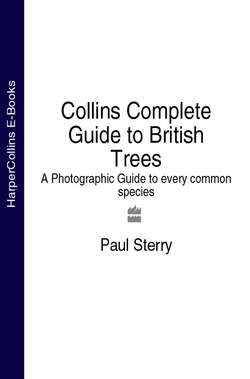Читать книгу Collins Complete Guide to British Trees: A Photographic Guide to every common species - Paul Sterry - Страница 33
HEDGEROWS
ОглавлениеIn a few cases, hedgerows that we see today are the linear remnants of ancient forests, all that is left of woodlands cleared for early agriculture from the Iron Age onwards. However, most hedgerows have been deliberately planted by man and are often hundreds of years old. For many people, they form the visual backbone of the British and Irish countryside.
Some hedgerows were planted to mark parish boundaries and most of these were in existence by the time of the Norman Conquest. However, many more were planted during the process of land enclosure, mainly between the 16th and 18th centuries. Before this time, much of the landscape was open land, used mainly for rough grazing with a little piecemeal agriculture. Enclosure, land clearance and hedge planting helped define and demarcate land ownership and in many cases hedges were maintained as stockproof barriers.
Ancient hedgerow.
When first created, hedgerows would probably have been planted with easily available, locally sourced shrubs and trees noted for their branching habit and, in some cases, spines. No surprise, then, that we find shrubs such as Blackthorn, Hawthorn and willow species predominating. Various elm species were popular hedgerow shrubs and trees in many parts, particularly East Anglia, while Beech prevailed in parts of the West Country, notably on Exmoor.
Over time, of course, natural additions to most hedgerows have occurred, seeds being transported by the wind or by roosting birds, depending on the method of seed dispersal of the tree or shrub in question. Given time, a hedgerow takes on the species composition of neighbouring woodland and much of the wildlife associated with woodland edges too. Research has found that there is a reasonably well-defined correlation between the number of woody species in a hedgerow and its age. The exact formula for calculating a hedgerow’s age is complicated, but a rough guide gives a reasonable degree of accuracy: count a 30m stretch of hedgerow and if 10 woody species are present, then it is likely to be around 1,000 years old; each woody species represents approximately 100 years.
Most hedgerows are man-made, and people control their fate to this day. Regular management – proper laying rather than indiscriminate flailing – is required to keep a hedge in good order. But, sadly, that seldom happens and, worse still, vast lengths of hedgerows have already disappeared, grubbed up by farmers in the mid-20th century; they were seen as a threat to farming ‘efficiency’. Today, grants for hedgerow planting schemes are, to some extent, redressing the balance.
The ecological importance of hedgerows is hinted at by the number of native plant and animal species with ‘hedge’ in their names: Hedge-sparrow (an old name for the Dunnock), Upright Hedge-parsley, Hedge Bindweed, Hedge Bedstraw, Hedge Brown (an old name for the Gatekeeper butterfly) spring to mind. A dense hedgerow is an ideal location for nesting birds such as Yellowhammers, Chaffinches and Goldfinches, while innumerable insects also make it their home, the species present dependent upon the exact composition of the hedge in question. And, of course, the herb layer associated with most hedgerows is also important, both for the plants that it comprises and for the invertebrates associated with it.
Notonly does a badly flailed hedge (top) look unsightly, but its value to wildlife is degraded and frequently it ceases to be stockproof as well. By contrast, within a couple of years, a well-laid hedge (above) forms an impenetrable, wildlife-rich barrier that lasts for a decade or more without the need for further work.
